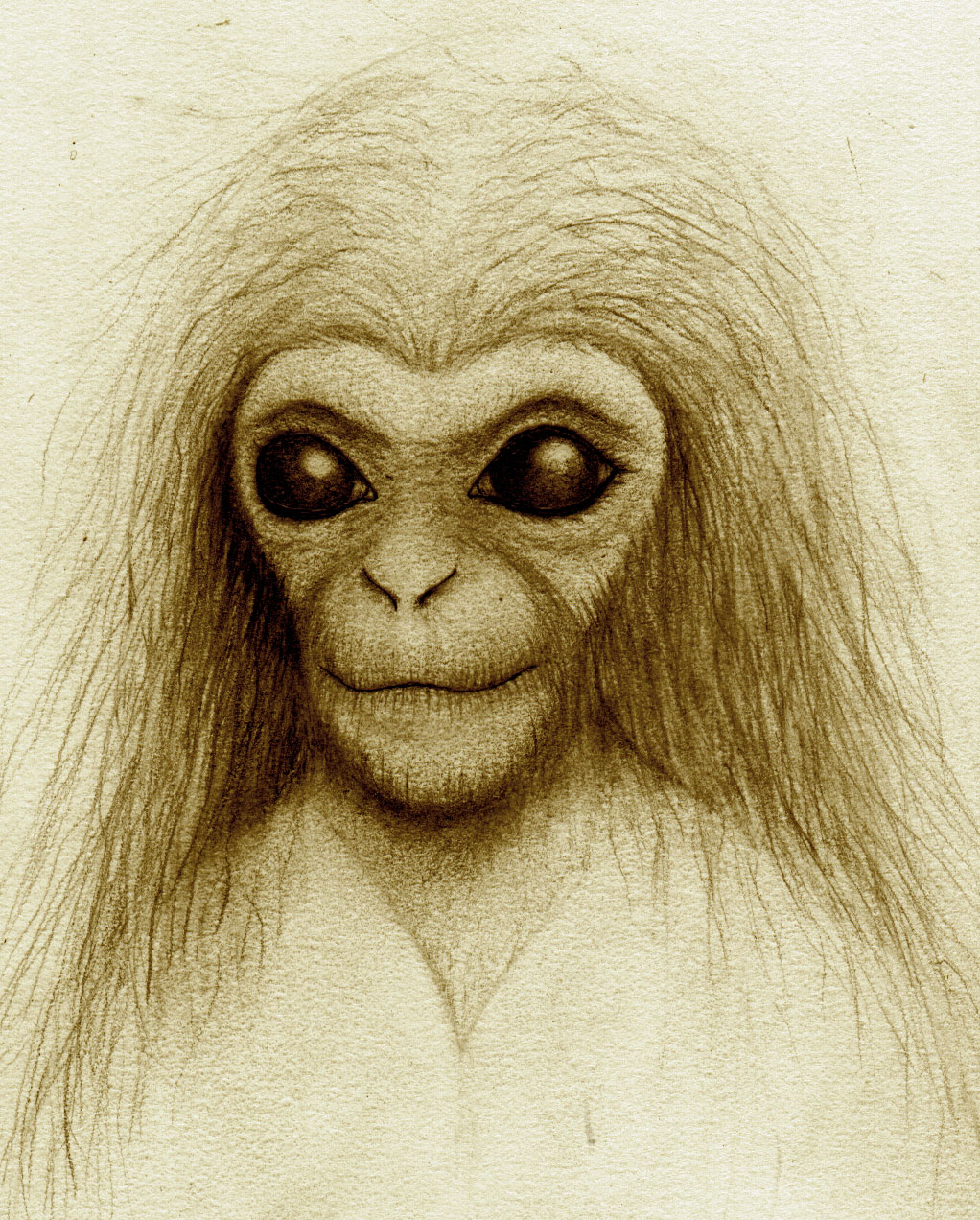The earliest reports of there being some
type of monster in Loch Ness, in the Scottish Highlands, date back to the 6th century.
Adomnán, an abbot of Iona Abbey,
Ireland, wrote a book called,
Life of St. Columba, about a century after the events. Adomnán claimed that the Irish monk, Saint Columba, was with some companions near Loch Ness when he saw a man being buried by the River Ness, by some locals. These people explained that the man had been swimming in the river
when he was attacked by a "
water beast". The "beast", they said, mauled him and dragged him under the water. Using a boat, the people had tried to rescue the man, but were able only to drag up his corpse.
Upon hearing this tale, Columba stunned the locals by sending his follower Luigne Moccu Min to swim across the river. Supposedly,
the beast pursued him, but Columba made the sign of the cross and commanded: "Go no further.
Do not touch the man. Go back at once." The beast immediately halted, as if it had been "pulled back with ropes", and fled in terror. Then both Columba's men and the Pagan locals praised God for the miracle.
Dinosaurs became extinct 65 million years ago at the end of the Cretaceous Period.
The two main theories as to why dinosaurs became extinct are:
1. The gradualist hypothesis- Extinction was basically due to climate change and habitat loss.
2. The
catastrophic hypothesis - There is some research pointing to an asteroid event at the end of the Cretaceous period. For example, the mineral iridium has been found in the clay strata of this period. This mineral is generally rare, but common in meteorites. The result of asteroids hitting the earth is that an
impact winter may have occurred; the
radiation from the sun would have been blocked, resulting in the global temperature decreasing drastically.
Another theory which relates to the catastrophic hypothesis is that the high level of volcanic activity at the end of the Cretaceous Period could have caused climate change.
Loch Ness, a deep,
freshwater lake in the Scottish Highlands, however, was formed only 10,000 years ago, by the action of glaciers at the end of the last Ice Age. The age of the dinosaurs was well and truly over at this stage.

Many people have claimed to have seen the Loch Ness monster and some have even produced photos.
Above is "The "Surgeon's Photograph", taken by Robert Kenneth Wilson, a London gynaecologist; it was published in the
Daily Mail on 21 April 1934. Wilson refused to have his name associated with the photo, and so, it became known as the "Surgeon's Photograph".
Before this, in December 1933, the
Daily Mail commissioned Marmaduke Wetherell, a big-game hunter to find the monster in the Loch Ness and off he went. On his return, Wetherall claimed that he had seen large footprints on the lake’s shores belonging to “a very powerful soft-footed animal about 20ft long”. However, researchers from London’s British Museum examined these footprints and determined that they had been made using a dried hippopotamus’s foot, and Wetherell was publicly shamed by the
Daily Mail.
In 1994, Wetherell’s son-in-law, Christian Spurling, confessed that he had helped Wetherell create the
famous Surgeon’s Photo, using some plastic and a toy submarine. Spurling, who was 90 years of age at the time, claimed Wetherell had given Wilson the photo to leak to the newspaper, in order to get revenge on the
Daily Mail for shaming him
Spurling claimed that Wetherell
committed the hoax to get revenge on the newspaper. Others dispute this and claim that the monster is real.
Those who claim to have seen
the giant monster, complete with humps and a long neck, may like to ask themselves, how a single dinosaur could have survived by itself for so many years after dinosaurs went extinct? And how is it that no one has found the remains of food eaten or waste products from such a creature? What would this creature mate with? And, if there are other creatures about, why have the dead remains of such creatures never been found?

In 2003, a fossil belonging to an extinct plesiosaur measuring 35 feet (11 meters) was found by retired scrap metal dealer, Gerald McSorley, who said he found it in Loch Ness after he tripped and fell into the water. Experts say it was probably planted there. Or, the fossil may have been lost. A local tour operator, caused a stir a few years ago when he accidentally left a plesiosaur fossil on a rock, that he often carted about with him to show to tourists.
There is no doubt, however, t
hat people from all over the world make their way to Loch Ness, to try and catch a glimpse of the monster and it must be said that the legend of Nessie is very good for the Scottish tourist industry. "Och aye the noo".
Books To Read
The Believing Brain: From Ghosts and Gods to Politics and Conspiracies---How We Construct Beliefs and Reinforce Them as Truths, by Michael Shermer















.jpg)

